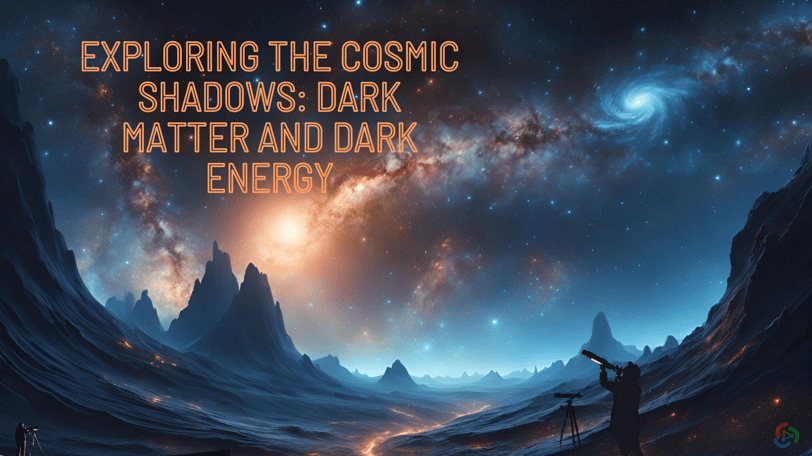Exploring the Cosmic Shadows: Dark Matter and Dark Energy


The universe is vast and mysterious, full of wonders and enigmas challenging our understanding. Among the most perplexing is dark matter and dark energy-the two concepts which have revolutionized our comprehension of the cosmos. Dark matter and dark energy are in no way the darkness we perceive at night, nor the nonexistence of light. They thus represent parts of the universe that do not interact within the realm of traditional existence in a way that may be said to be invisible.
Dark Matter: The Cosmic Scaffold
Dark matter is believed to constitute about 27% of the universe. It does not interact with electromagnetic forces, meaning it neither emits nor absorbs light and therefore cannot be seen. Its existence is inferred from its gravitational effects on visible matter, radiation, and the large-scale structure of the universe. For example, galaxies spin at such speeds that, without the presence of dark matter's extra gravitational pull, they would tear themselves apart.
Evidence for dark matter comes from observations such as galaxy rotation curves, gravitational lensing of background objects by galaxy clusters, and the cosmic microwave background radiation. These indicate that there is far more mass in the universe than can be accounted for by visible matter alone.
Dark Energy: The Force of Cosmic Acceleration
Dark energy is even more mysterious. It constitutes about 68% of the universe and is thought to be behind the acceleration of the universe. In the late 1990s, observations of Type Ia supernovae showed that the universe was not only expanding but expanding at an increasing rate. This acceleration was not explained by the attractive force of gravity alone and led to the hypothesis of dark energy as a repulsive force.
Dark energy appears to be supported by the idea of a cosmological constant which was originally described by Albert Einstein as part and parcel of general relativity theory. It may be seen to be an integral property of space itself and as such energy density does not have to decrease because space expands, leading to ever increasing rates for the universe.
The Origins and Nature of Dark Matter and Dark Energy
Despite much work, the nature and origin of dark matter and dark energy remain unknown. Some of the candidates thought to be dark matter include WIMPs, axions, and sterile neutrinos, among others. These hypothetical particles have not been detected directly yet; however, experiments worldwide are attempting to find them with increasingly greater sensitivity.
Dark energy is even more elusive. It could be the cosmological constant, as already discussed, or it could be a dynamic field, changing over time, called quintessence. There are also theories suggesting modifications to general relativity that could account for the acceleration without dark energy.
Implications for Cosmology and Fundamental Physics
The existence of dark matter and dark energy, respectively, profoundly influences cosmology and fundamental physics. They speak of an understanding that is not yet complete of the universe, leaving new aspects of reality undiscovered. Dark matter and dark energy challenge the Standard Model of particle physics as well as Einstein's theory of general relativity. Scientists, in turn, must develop new theories and experiment innovatively to solve these phenomena.
In pursuit of dark matter and dark energy, it brings together astronomers, astrophysicists, particle physicists, and theorists into the frontier of science. It includes the smallest scale of subatomic particles to the largest structures within the universe. It is one way that might result in new knowledge about the universe as far as its nature concerning space, time, and matter.
Dark matter and dark energy are two of the greatest mysteries of modern science. It constitutes the lion share of the content but remains invisible and intangible. Understanding them is highly important for having a complete picture of the cosmos and laws governing it. For when we step deeper into those cosmic shadows, there lies perhaps answers to many questions about the nature of our universe and how it places itself on our global context. Scientific endeavors aside, the journey to darkness is in and of itself a humanly spirited adventure; the journey itself would touch into curiosity and wonder for humanity when one looks upon the stars in all hope of not seeing the darkness there.
